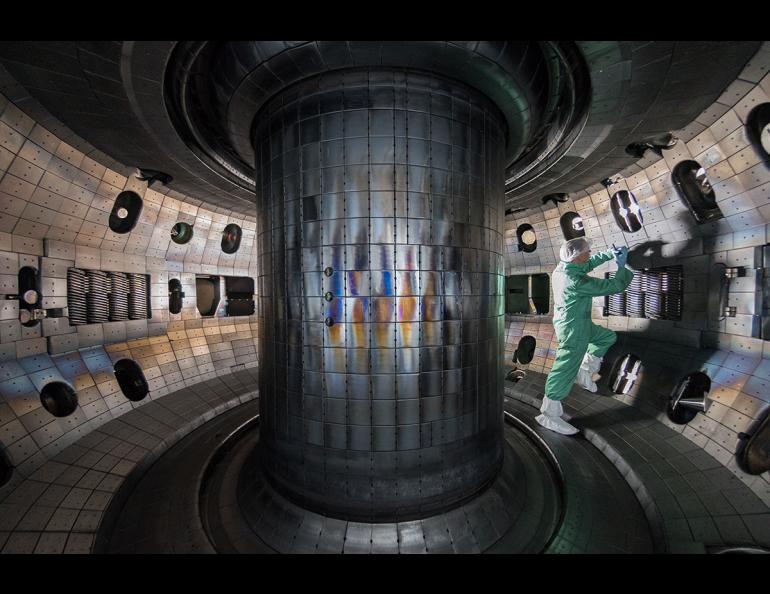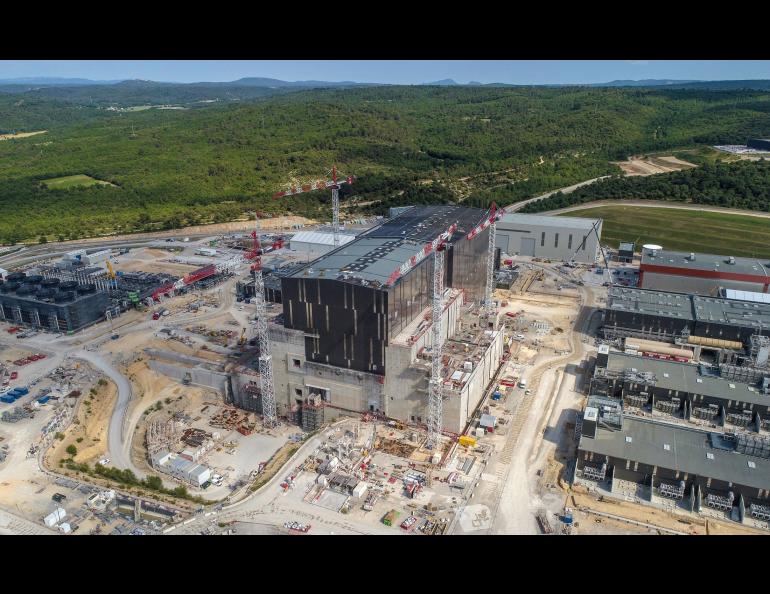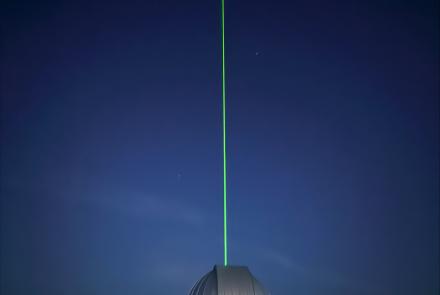


UAF research contributes to progress on fusion energy
Fairbanks and nuclear fusion research usually aren’t mentioned in the same sentence. But they could be.
Plasma physicist David Newman at the University of Alaska Fairbanks Geophysical Institute is a leading researcher in nuclear fusion energy. Fusion is seen as a possible clean energy source because it leaves no long-lived radioactive byproduct, as fission nuclear plants do, and produces no greenhouse gases.
Newman, a former chair of the American Physical Society’s Division of Plasma Physics, has been working in nuclear fusion research for decades. He has been at UAF since 1998 and was previously at Oak Ridge National Laboratory in Tennessee.
The research has taken him overseas to work with colleagues in Spain, Japan, Germany and the United Kingdom. In the U.S., he has worked with researchers at the DIII-D National Fusion Facility in San Diego, the Princeton Plasma Physics Laboratory, the Massachusetts Institute of Technology and elsewhere.
His latest research, funded by the U.S. Department of Energy, is in magnetic confinement fusion, one of two major pathways in the nuclear fusion field.
Scientists at the National Ignition Facility at the Lawrence Livermore National Laboratory in California achieved a breakthrough in December through the other of those two pathways: inertial confinement fusion. They were the first, after decades of research, to produce more energy from fusion than was used to create it.
The National Ignition Facility has the world’s most energetic laser. It can deliver in 16 nanoseconds the light energy equivalent to 20,000 100-watt light bulbs illuminated for one second.
“What they achieved is a significant, incremental step,” Newman said. “There’s still a long way to go, probably several decades, before fusion energy can be created on a large and commercial scale.
“If we can get to that level, it would change our planet,” he said.
Magnetic confinement fusion, the field in which Newman works, uses magnetic fields and electromagnetic waves in a doughnut-shaped device called a tokamak to heat and confine gas containing deuterium and tritium, two isotopes of hydrogen, to form a plasma.
Deuterium and tritium have the same number of protons but a different number of neutrons. They are chemically the same but have different atomic weights. Deuterium, which is not radioactive, is common in seawater. Tritium is radioactive but fast-decaying. It’s not common in nature but can be artificially created in an interaction with lithium.
Fusion of one atom each of deuterium and tritium creates a single heavier helium atom and a free energetic neutron. In a fusion reactor, the free neutrons and the helium nuclei are released with a great deal of extra energy, which is captured as heat. That heat, when fusion is someday at an industrial scale, can be used through familiar mechanical means to produce electricity that powers homes, businesses, streetlights and more.
The resultant helium, the same as in birthday party balloons, is a harmless byproduct.
The United States, China, the European Union, India, Japan, South Korea and Russia are working together to build the International Thermonuclear Experimental Reactor, the world’s largest tokamak, in southern France.
Inertial confinement fusion, the method used at the Lawrence Livermore National Laboratory, uses lasers to heat fuel pellets consisting of deuterium and tritium to the point that they explode, creating intense inward-driven pressure and heat that fuses the deuterium and tritium atoms to create energy.
Success with magnetic confinement fusion would give the world two potential methods of producing clean fusion energy at a large scale.
“Over the last few decades enormous progress has been made on the path to magnetic confinement fusion,” Newman said. “I think it’s likely that within the next three to nine years a magnetic confinement experiment will exceed the break-even point and pave the way for putting fusion energy on the power grid, which I find to be a very exciting prospect.”
The aim in each method is to achieve ignition — a burning plasma that keeps spitting out those extra neutrons and helium nuclei, producing more energy in the form of heat than was used to produce it.
Ignition requires a high enough atomic density and a high enough temperature to create initial fusion — 270 million degrees Fahrenheit, 10 times hotter than the sun’s core. It also requires that the plasma be confined long enough that the initial fusion can be sustained without external action other than the continued feeding of fuel.
In both approaches, confinement of the burning plasma is essential both to make the confinement time long enough for the fusion to occur and to protect the reactor in which the fusion occurs. It happens naturally in our sun due to the force of gravity, but gravitationally confined fusion can’t be replicated on Earth.
Newman’s current research in magnetic confined fusion is in a problem that develops as the plasma heats up and continues after ignition. It’s called turbulence and turbulent transport, the chaotic motion that occurs every day in such things as smoke curling and spreading from a power plant and river water entering an ocean.
Turbulence in the burning plasma inside a nuclear fusion device causes the unwanted spreading of generated heat and particles toward the confined plasma’s outer edges and the reactor wall. Heat at the outer edges becomes lost. Uncontrolled particle transport can damage the reactor’s internal lithium-based protective blanket.
Controlling this turbulent transport is one of the big issues still facing fusion.
“This is increasingly important as more effort is made to pursue burning plasmas,” Newman said. “It’s one of the last remaining major problems in fusion energy research.”
• David Newman, University of Alaska Fairbanks Geophysical Institute, denewman@alaska.edu
• Rod Boyce, University of Alaska Fairbanks Geophysical Institute, 907-474-7185, rcboyce@alaska.edu







